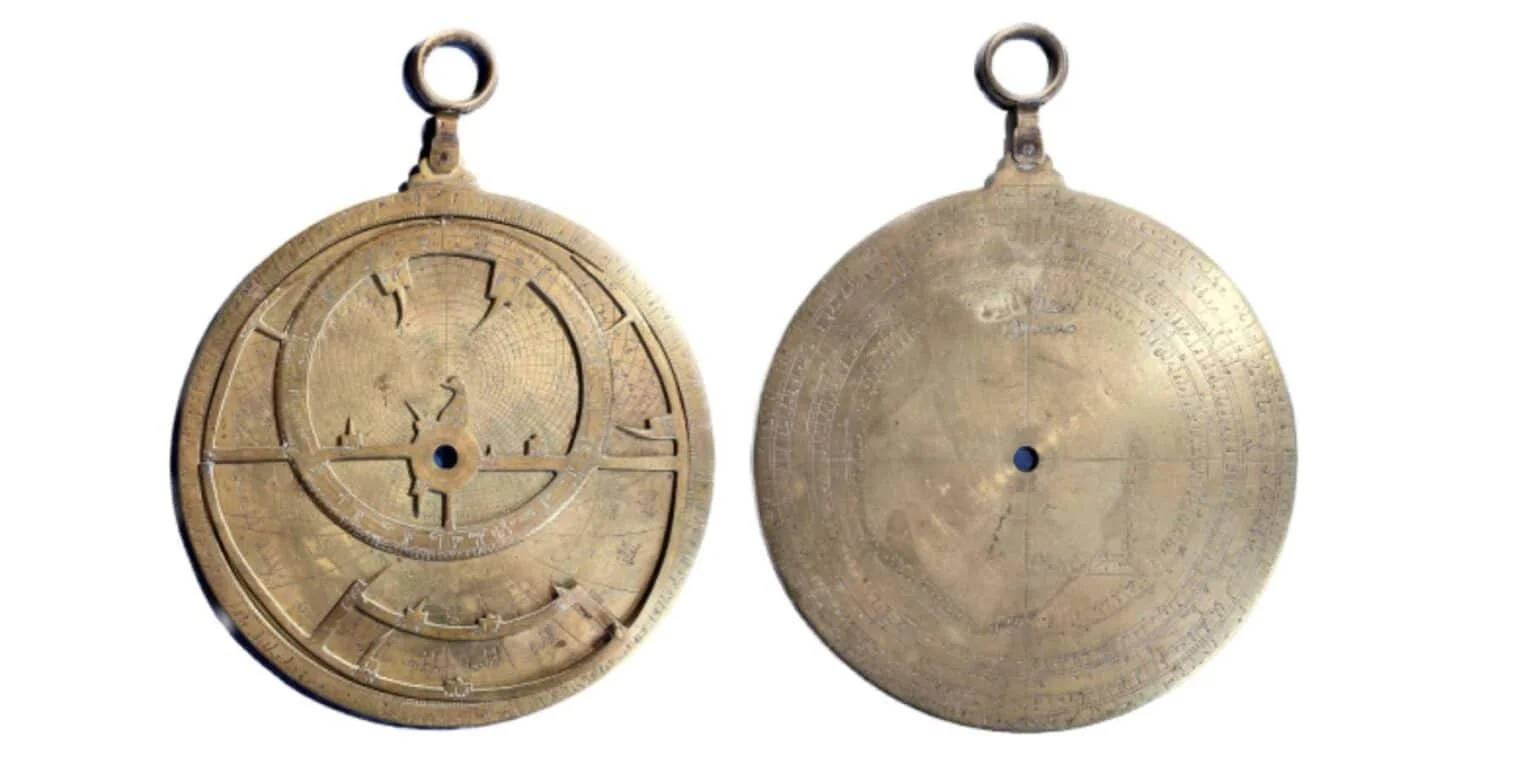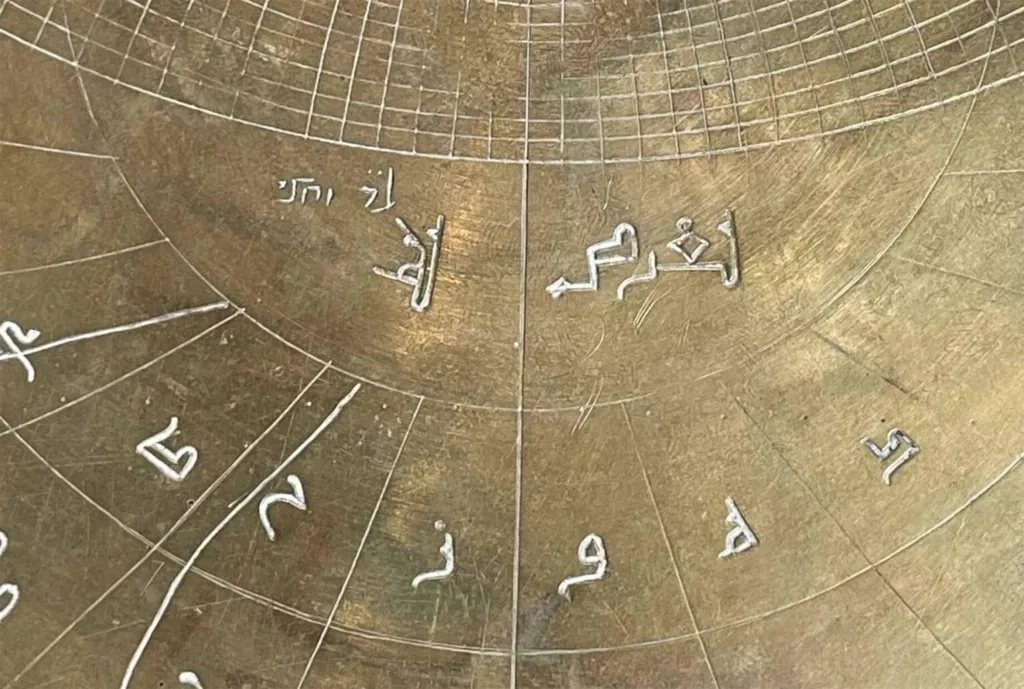World’s oldest Islamic astrolabe used by Jews and Christians
- March 4, 2024
- 0
The strange disk, thought to be a fake, turned out to be an astronomy instrument made in Andalusia in the 11th century. And trilingual inscriptions testify to scientific
The strange disk, thought to be a fake, turned out to be an astronomy instrument made in Andalusia in the 11th century. And trilingual inscriptions testify to scientific

The strange disk, thought to be a fake, turned out to be an astronomy instrument made in Andalusia in the 11th century. And trilingual inscriptions testify to scientific and cultural exchange between Muslims, Jews and Christians. While preparing a lecture on Islamic objects in medieval Europe, historian Federica Gigante (Federica Gigante) from the University of Cambridge (Great Britain) accidentally visited the website of the Miniscalchi-Erizzo museum in Verona (Italy). This is a private museum that houses the legacy of the 17th century Italian collector Ludovico Moscardo. In one of the photos, she noticed a disk sitting in the corner.
In response to the request, the museum owners said that they did not know anything about this work and that they thought it was fake. However, Gigante found that the second catalog of the Moscardo Museum, published in 1672, gave the following description of the collection: “There are copper astrolabes in this museum. [користувачів] It is in many languages and easily shows all the houses of the planets.”
To date, all astrolabes were believed to have been lost, as the collection changed hands many times. Gigante assumed that this was not the case and that the photograph was an astrolabe. He went to Verona to examine the issue in detail. Dr. Gigante presented the results of his research in an article published in the journal. Nuncius.

The author analyzed the structural features of the tool, as well as the style of engraving and the location of the scales. He concluded that the astrolabe was made in Andalusia in the 11th century and was one of the oldest astrolabes made by Islamic masters. The main part of the writings on the astrolabe is made of Arabian elm. And this applies not only to the names of constellations or other generally accepted names for such instruments. On one side of the plate it is written in Arabic “For the latitude of Cordoba, 38°30′” and on the other side it is written “For the latitude of Toledo, 40°”.
The craftsman would often leave his signature and date of manufacture on the instrument. Behind the eardrum (astrolabe detail) of the Andalusian device is the following text: / صناة يونس[…]Lashaq, meaning “For Isaac […]/ Iona’s work”. According to Gigante, the astrolabe was engraved some time after its construction, probably for a later owner.
The names Isaac and Jonah may be Hebrew names written in the Arabic alphabet. This detail indicates that this article was at one point in circulation in the Sephardic Jewish community in Spain, where Arabic was the spoken language. The latitude coordinates of North Africa are shown in the second inset plate. At some point the astrolabe must have arrived in Morocco or Egypt.
However, it is not just Arabian elm that covers the astrolabe. Some of the signatures were copied in Hebrew. Jewish symbols were added to the astrolabe with multiple hands. One of the additions is deeply and neatly cut, while the other translations are very light, irregular and show the inexperience of the engraver. The author of the work believes that these additions and Hebrew translations indicate that the object at some point left Spain or North Africa and circulated among the Jewish diaspora in Italy, where Arabic was not understood and Hebrew was used instead.
Gigante notes that one of the Hebrew inscriptions carefully engraved on the Arabic 35° latitude sign reads “34 and a half”, not “34 ½”. In his opinion, this shows that the engraver was not an astronomer or astrolabe maker. Other Hebrew inscriptions are translations of the Arabic names of the astrological signs: Scorpio, Sagittarius, Capricorn, Aquarius, Pisces and Aries.
Astrolabe plates have light scratch marks all over with modern looking numerals. An explanation is needed here. Although the numbers we use today are called Arabic numerals, Islamic masters in the south of Spain in the 11th century were using different types of numbers.
Also engraved on the astrolabe are a few words in Italian or vulgar Latin. Federica Gigante thinks that these additions may have been made in Verona, when the astrolabe came into the hands of Christians from the Jewish community.
Source: Port Altele
As an experienced journalist and author, Mary has been reporting on the latest news and trends for over 5 years. With a passion for uncovering the stories behind the headlines, Mary has earned a reputation as a trusted voice in the world of journalism. Her writing style is insightful, engaging and thought-provoking, as she takes a deep dive into the most pressing issues of our time.